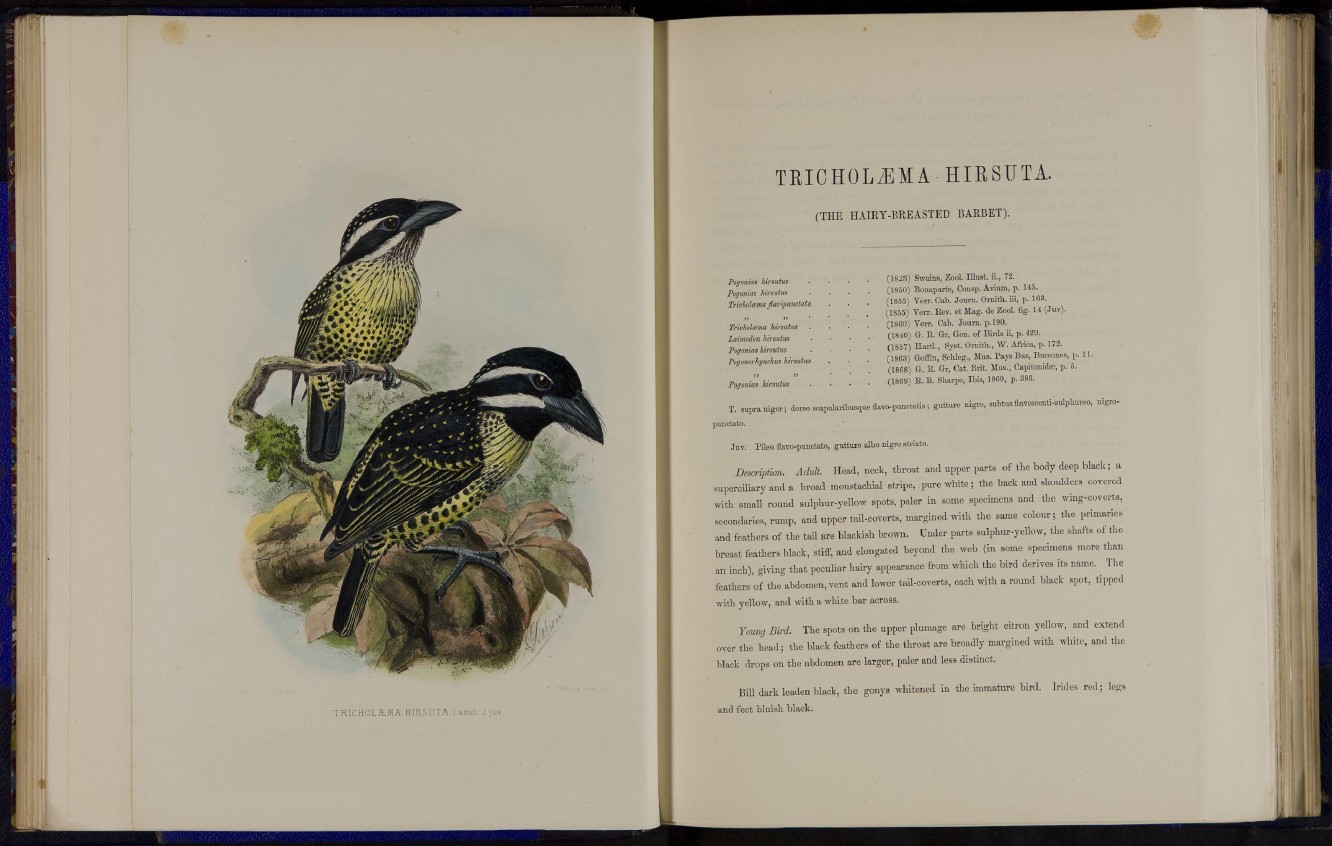
TRIOHOLiEMA HIESTJTA.
( T H E H A I R Y - B R E A S T E D BARBET).
Pogonias hirsutus
Pogonias hirsutus
Tricholcema flavipimctata
ii i>
Tricholmma hirsutus
Zaimodon hirsutus
Pogonias hirsutus
Pogonorhynchus hirsutus
Pogonias hirsutus
(18^3) Swains, Zool. Blust, ii., 72.
(1850) Bonaparte, Consp. Avium, p. 145.
(1855) Verr. Cab. Jouni. Ornith. iii, p. 103.
(1855) Verr. Eev. et Mag. de Zool. lig. 14 (Juv).
(1860) Verr. Cab. Journ. p. 190.
(1840) G. E. Gr, Gen. of Birds ii, p. 429.
(1857) Hard., Syst. Ornith., W. Africa, p. 172.
(1863) Goffin, Schleg., Mus. Pays Bas, Buccones, p. 11.
(1868) G. E . Gr, Cat. Brit. Mus., Capitonida;, p. 5.
(1869) E. B. Sharpo, Ibis, 1809, p. 386.
T. supra niger ; dorso scapularibusque flavo-punctatis ; gutture nigro, subtus flavescenti-sulphureo, nigropunctato.
Juv. Pileo flavo-punctato, gutture albo nigro striato.
Description. Adult. Head, neck, throat and upper parts of the body deep black; a
superciliary and a broad moustachial stripe, pure w h i t e ; the back and shoulders covered
with small round sulphur-yellow spots, paler in some specimens and the wing-coverts,
secondaries, rump, and upper tail-coverts, margined with the same colour; the primaries
and feathers of the tail are blackish brown. Under parts sulphur-yellow, the shafts of the
breast feathers black, stiff, and elongated beyond the web (in some specimens more than
an inch), giving t h a t peculiar hairy appearance from which the b i r d derives i t s name. The
feathers of the abdomen, vent and lower tail-coverts, each with a round black spot, tipped
with yellow, and with a white bar across.
Yowig Bird. The spots on the upper plumage are bright citron yellow, and extend
over t h e head; the black feathers of the throat are broadly margined with white, and the
black drops on the abdomen are larger, paler and less distinct.
Bill dark leaden black, the gonys whitened in the immature bird. Irides red; legs
and feet bluish black.